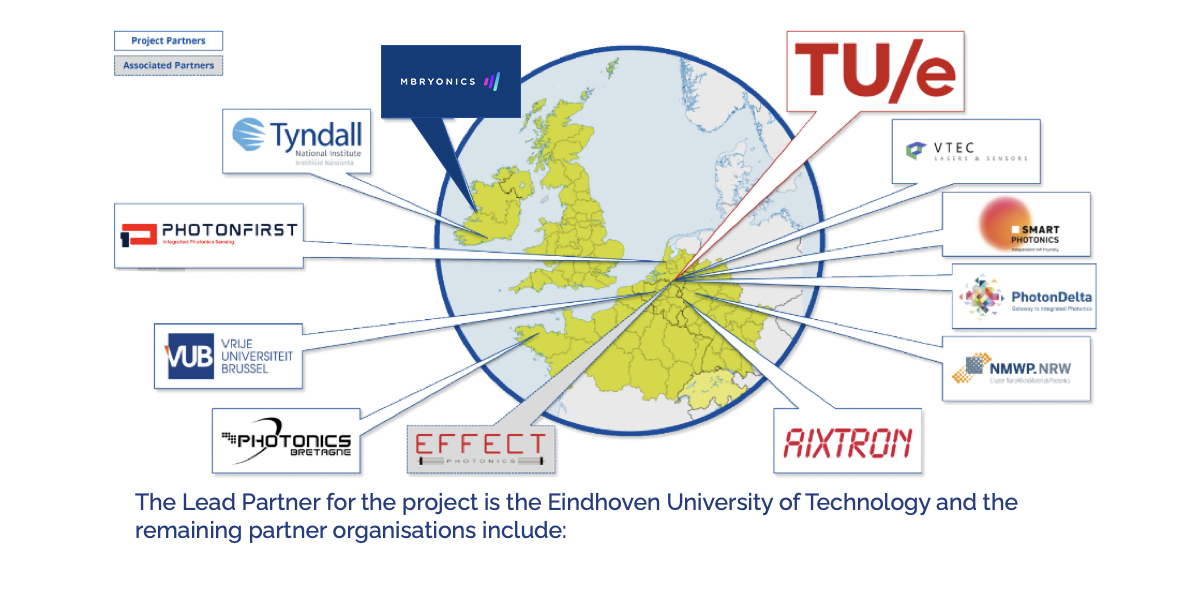
OIP4NWE – Open Innovation Photonics Pilot for North-West Europe.
The OIP4NWE project aims at providing an open-access pilot line for generic PICs through open innovation with the goal of establishing enhanced and scalable photonic integration technology.
The Interreg NWE-Project “OIP4NWE” aims at establishing an open access pilot line for the development, processing and testing of “Photonic integrates Circuits” (PICs). Integrated photonics is an emerging technology where the manipulation of light takes place on a chip, making the components an order of magnitude cheaper, smaller and more energy-efficient compared to today’s solutions.
By providing these services to SMEs across Europe, the project reduces barriers and strengthens the competitiveness and innovativeness of European SME sustainably on the global markets.
Open-access facilities are of a laboratory nature and inadequate for manufacturing PICs with cost-efficiency, speed and reliable quality. The equipment for PIC manufacturing is of an innovative and specialized nature that cannot be obtained from a single country. As application grows, NWE needs to stay ahead. Therefore, intense collaboration between innovation stakeholders at transnational level is an important goal of the project.
The Project is funded by the Interreg North-West Europe Programme, which fosters transnational cooperation to make North-West Europe a key economic player and an attractive place to work and live, with high levels of innovation, sustainability and cohesion.
The Lead Partner for the project is the Eindhoven University of Technology and the remaining partner organisations include:

- AIXTRON SE
- Photonics Bretagne
- Vrije Universiteit Brussel
- SMART Photonics
- Tyndall National Institute
- VTEC Lasers & Sensors
- PhotonFirst
- MBRYONICS Limited
- Oxford Instruments Nanotechnology Tool Ltd.
- NanoMicroMaterialsPhotonics NRW Cluster c/o NMWP Management GmbH
- Photon Delta
The Interreg NWE-Project “OIP4NWE” project ran for 4 years (2018 -2022) and secured a total budget of € 13.9 m, including € 8.3 m of an EU funding alone.

